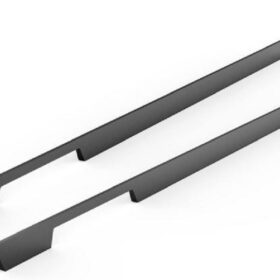The Role of Kitchen Counter Handles in Meeting Design and Building Standards
Kitchen counter handles are an essential component of any kitchen design, serving both functional and aesthetic purposes. Beyond their practical role in opening and closing drawers and cabinets, they also contribute to the overall ambiance and accessibility of the kitchen. Understanding the standards and considerations for kitchen counter handles is crucial to ensure compliance with building regulations and create a functional and aesthetically pleasing space.
Ergonomic Standards and Accessibility
Counter handles must adhere to ergonomic guidelines to provide comfortable and accessible use. Handles should be sized and positioned to allow users of different heights and abilities to grip and operate them without strain. Standards such as the Americans with Disabilities Act (ADA) and the Universal Design Movement provide specific guidelines for handle height, reach, and grip diameter to accommodate individuals with disabilities.
Safety Regulations and Materials
Kitchen counter handles must meet safety requirements to prevent accidents and injuries. Sharp edges or protrusions should be avoided, and handles should be made of durable materials that can withstand regular use and exposure to moisture and chemicals. Non-porous surfaces, such as stainless steel or antimicrobial coatings, help prevent the spread of bacteria and ensure hygiene.
Aesthetic Appeal and Design Considerations
In addition to functionality, counter handles play a significant role in the aesthetics of a kitchen. Handles come in various shapes, finishes, and materials, allowing homeowners to complement the overall design scheme. From sleek and modern pulls to rustic and ornate knobs, handles can enhance the style and create a cohesive visual appeal.
Building Codes and Regulations
Local building codes and regulations often specify requirements for kitchen counter handles. These codes may include height restrictions, spacing requirements, and accessibility standards. It is essential to consult local authorities to ensure that the chosen handles meet the necessary building codes.
Maintenance and Longevity
Kitchen counter handles need to be durable and easy to maintain to ensure longevity. Materials should be corrosion-resistant and resistant to daily wear and tear. Handles should also be easy to clean to prevent the accumulation of dirt and grime. Regular cleaning and maintenance help extend the lifespan of handles and keep them looking their best.
Kitchen counter handles are an integral part of kitchen design and building standards. They enhance functionality, meet accessibility requirements, ensure safety, and contribute to the overall aesthetics of the space. Understanding the standards and considerations for counter handles is crucial for creating a kitchen that is both practical and visually appealing while ensuring compliance with building regulations. By following these guidelines, homeowners and designers can create kitchens that are safe, accessible, and visually stunning for years to come.
-
2024-09-14Exploring the Different Types of Modern Closet Door Pulls and Their Applications
-
2024-09-14How Cabinet Door Pull Handles Support High-Traffic Areas
-
2024-09-06Cost-Benefit Analysis of Investing in High-Quality Long Wardrobe Door Handles
-
2024-09-04How Flat Cabinet Handles Enhance Modern Interior Design
-
2024-11-29Top Trends in Modern Kitchen Cabinet Pulls for 2024
-
2024-11-28The Ultimate Guide to Modern Kitchen Cabinet Pulls- Materials, Styles, and Tips
-
2024-11-27Elevate Your Kitchen Design with These Must-Have Modern Cabinet Pulls
-
2024-11-26Sleek and Stylish- The Best Modern Kitchen Cabinet Pulls for a Contemporary Look






